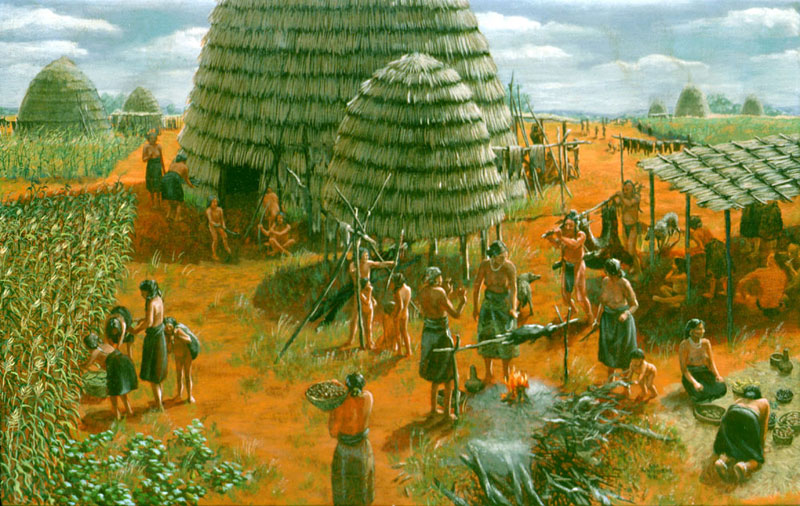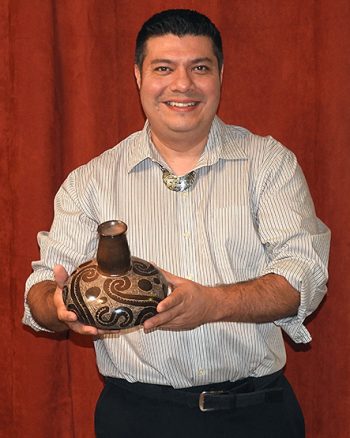East Texas is a land of immense diversity. Much of the area is dominated by what is simply known as the Piney Woods ecoregion, a 54,000 square mile area shared with Louisiana, Arkansas and Oklahoma.
In addition to pine forests is a menagerie of wetlands, oak savannas, bottomland hardwood forests and vestigial prairies.
But like ecosystems across the southeastern United States, The Piney Woods are critically endangered through a combination of fire suppression, industrial practices and development.

How can East Texans live in a healthy relationship with their natural environment, and what’s at stake when we don’t?
Sometimes, human society and the ecosystems around us are viewed as separate entities. However, the wounds humans inflict on air, water and land will ultimately affect us. According to the journal Environmental Research, 8.7 million people died worldwide from fossil fuel emissions in 2018.
As ecosystems change, the most vulnerable among us will likely be most impacted by environmental damage. Disparities in emission exposure attest to this. African-Americans are 1.54 times more likely to live in high emission areas as opposed to white people. The risk is 1.2o times greater for Latines and 1.35 more for those below the poverty line.
In this first installment of a three-part series, The Tyler Loop examines early East Texas forests and the Caddo relationship to it.
Caddo lands
Much discussion of East Texas history and Texas history at large begins with the arrival of Luis de Moscoso de Alvarado in 1542. He, like the many conquistadors who followed, sought riches — especially gold — for themselves and Spain. Of course, humans were living in East Texas for thousands of years prior to the arrival of the colonizers, relying not on land exploitation, but coexistence.
The scarring of land in search of treasure stands in contrast to ecological sustainable practices of the Caddo and other nations, whose cultures began to emerge approximately 9oo BCE.
Chase Kahwinhut Earles, an artist and member of the Caddo Nation of Oklahoma, said there are misconceptions about his people.
Rather than one consolidated tribe, the peoples of the Piney Woods area were split into numerous different groups sharing a common language and many cultural practices.
Earles said, “In East Texas, one of the most familiar tribes would be what most people know as Nacogdoches, but it is actually pronounced Nat-kee-na-da-che, the Caddo word for ‘place up on top.’”
Caddos occupied the land from the southern edge of the Ozarks in the north down to the northern edge of a densely forested area — now Southeast Texas, known as the Big Thicket.

Across Caddo tribes, land contained enormous farms, boasting a diversity of crops. Earles describes a typical Caddo village.
“The villages were central to the surrounding farmland and were described as being miles in square area,” said Earles. “From wherever you were standing, you probably couldn’t see the end of the surrounding farmland.”
To maintain their farmland, the Caddo would set low-grade fires to clear brush and return nutrients to the soil. These fires would often spread into the surrounding woodlands.
Contrary to popular belief, these fires were beneficial to these ecosystems. The prairies, as well as pine and oak savannas, depend on annual or semi-annual fires. The phenomenon is similar to prescribed burning carried out by conservation agencies, and in rare cases, the timber industry.
Earles makes a distinction between the fire management of his people and that of the lumber industry. Sustainability and care for the land was the founding principle behind his people’s practices rather than a desire to conquer it.
Caddo stories reveal connection to the earth
Reflective of the care the Caddo had for their land, Earles pointed to an origin story, passed down by centuries of oral tradition. In this story, humans and animals lived under the ground. Eventually, they discovered the mouth of the cave from which they ascended.
Before all of the people and animals could emerge, a wolf blocked the entrance of the cave, sealing it. Those who had emerged wept for those still trapped below, giving the site, located in present day South Central Louisiana, the name “cha´ kani´ na” or “the place of crying.”
The term used to describe the earth is “enah” or “mother.” According to Earles, this demonstrates the earth is regarded as the mother of all life and contains every provision for survival.
The Caddo also understood their actions had ramifications on the surrounding environment. Earles said in the Caddo story of the flood, his people believed their own actions brought misfortune upon the land.
Prior to the flood, “The droughts caused the lakes and rivers to dry up, and so immediately we thought we had done something wrong. It kind of reflects for us how what we do is reflected in what happens to the earth and our environment,” said Earles.
Earles said countless cultural traditions such as dances, prayers and art demonstrated the connection his people had to the land, especially Caddo pottery. “A lot of our pottery is ceremonial and that is directly in itself using the earth in ceremony,” said Earles.

Endangered habitats
The Caddo sought out the bluffs above the river valleys to make their homes. The floodplains below were covered by a variety of different bottomland hardwood forests and wetlands.
As described in “Big Thicket Plant Ecology” by Geraldine Ellis Watson, some principal tree species present are Oaks, Tupelos, Elms, Magnolias, Loblolly Pine, and in some cases, Bald Cypress.
The dense understory of vines, shrubs, Dwarf Palmettos along with the swollen buttresses of century-old trees draped with Spanish moss is reminiscent of tropical settings.
Such habitats have been reduced by 63% according to the United States Geological Survey.

Prior to Anglo-European settlement, East Texas was dominated by open pine savannas populated by Shortleaf Pine in the north and Longleaf pine in the south.
Both species are dependent on routine low-grade fires to control competing underbrush and hardwoods. The aforementioned use of fire by indegenous peoples helped maintain the habitat.
As we will explore in a later installment in this series, both Shortleaf and Longleaf, along with their associated ecosystems, have declined significantly.
On the far western edge of East Texas lies the post oak savanna, another endangered habitat. Similar to its eastern counterpart, this ecosystem is characterized by sparse tree cover and gently rolling grasslands with patches of open sand. The main distinctive feature besides its flora is the comparatively dry climate.
Numerous accounts by the Spanish describe the untouched wilderness they encountered upon their arrival to the continent.
In E . Thomson Shields Jr.’s essay, Imagining the Forest: “Longleaf Pine Ecosystems in Spanish and English Writings of the Southeast,” The Gentleman of Elvas, a member of Hernando De Soto’s entrada, wrote:
“…the land is very level and has many lakes and thick woods. In places there are wild pine groves and the soil is lean, and without mountain or hill in it. The land of Ocute is the most fertile and vigorous and has the most open forest and very excellent fields along the rivers.”
Shields’ essay includes an account by Garcilaso de la Vega:
“…There were many groves of Walnuts, Pines, and other Trees unknown in Spain. All appeared to be placed by hand, there was enough space between one and another, that certainly they could run horses between them: it was a very clear Forest, and pleasant.”

Anglo settlers emerge
The Spanish had little interest in timber. Most Spaniards’ descriptions give walnut trees prominence, suggesting that pines were deemed of lesser economic value. Most early incursions into Texas and the rest of the Southeast sought to find gold, but came up empty.
Spanish interest in Texas, especially its eastern region, was renewed after France increased its presence there in the late 1600s. Despite repeated efforts to settle Texas, most through the early 1700s failed due to indigenous resistance, disease, hostile climate and the immense isolation.
Since permanent European settlements were not established, the forests of East Texas were spared the axe for the time being. Nevertheless, the arrival of the colonizers spelled the beginning of the end for indigenous prosperity and the forested wilderness they called home.
Following Mexican Independence from Spain in 1810, Anglo settlers began to trickle across the Sabine. That trickle would soon become a flood the Mexican government could not control.
They brought with them a desire to gain wealth at any cost, and of course, slaves. The indigenous nations would begin to fall along with the forests where they hunted, gathered and farmed.
In its second installment, The Tyler Loop will examine how the environment was and is exploited for profit in East Texas.
Deep Indigo Collective is a visual storytelling resource supporting news outlets reporting on the local impacts of environmental threats and the climate crisis. As a 501(c)(3) organization, Deep Indigo is proud to produce original visual journalism on behalf of our editorial partners across the United States.
David A. Harrison (he/his) is a Tyler native and senior at the Univerisity of Texas at Tyler studying political science. Born into a working-class family, Harrison has faced houslessness and poverty for most of his life. As a result, Harrison plans to devote his life to fighting socioeconomic inequality. After graduating December 2021, Harrison plans on pursuing a Ph.D. with the aim of analyzing policies, practices and histories in order to achieve economic, social, racial justice for all.
Love what you're seeing in our posts? Help power our local, nonprofit journalism platform — from in-depth reads, to freelance training, to COVID Stories videos, to intimate portraits of East Texans through storytelling.
Our readers have told us they want to better understand this place we all call home, from Tyler's north-south divide to our city's changing demographics. What systemic issues need attention? What are are greatest concerns and hopes? What matters most to Tylerites and East Texans?
Help us create more informed, more connected, more engaged Tyler. Help us continue providing no paywall, free access posts. Become a member today. Your $15/month contribution drives our work.







